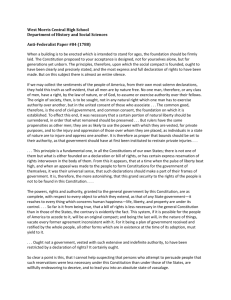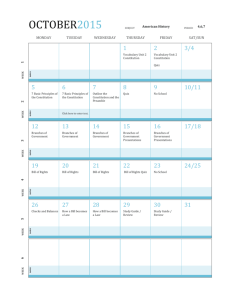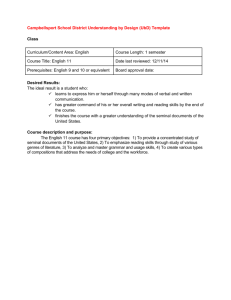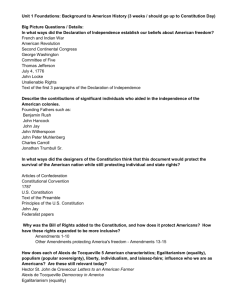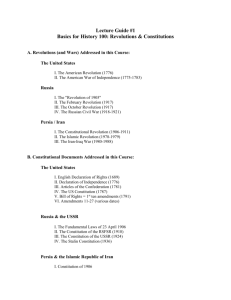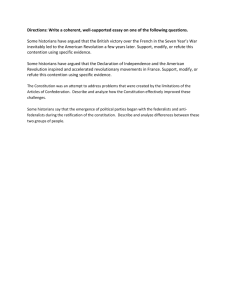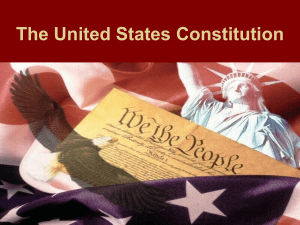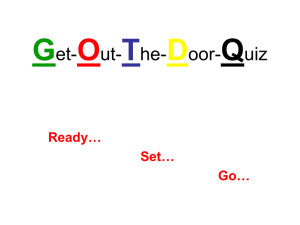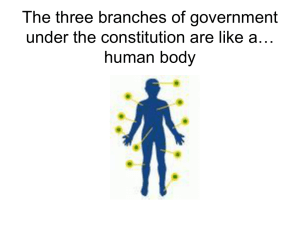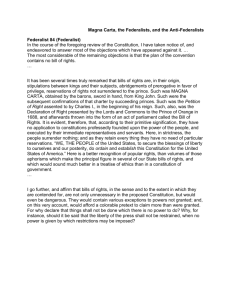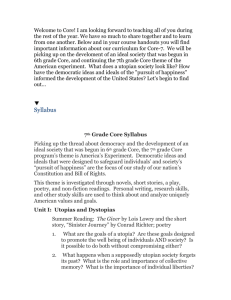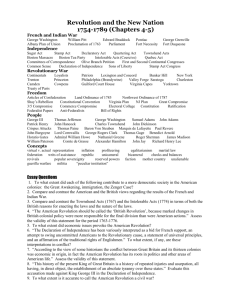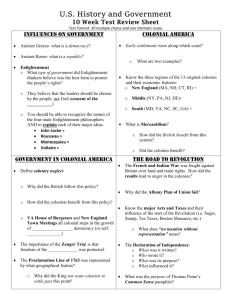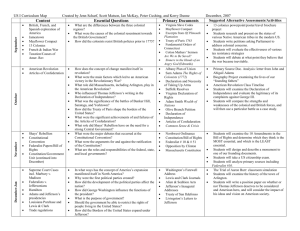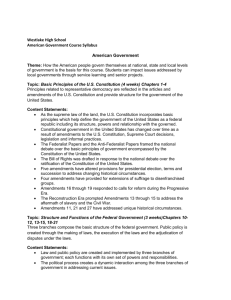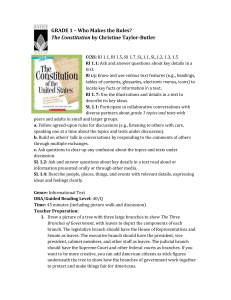US Historical Perspectives, Russell County Middle School, 8th
advertisement
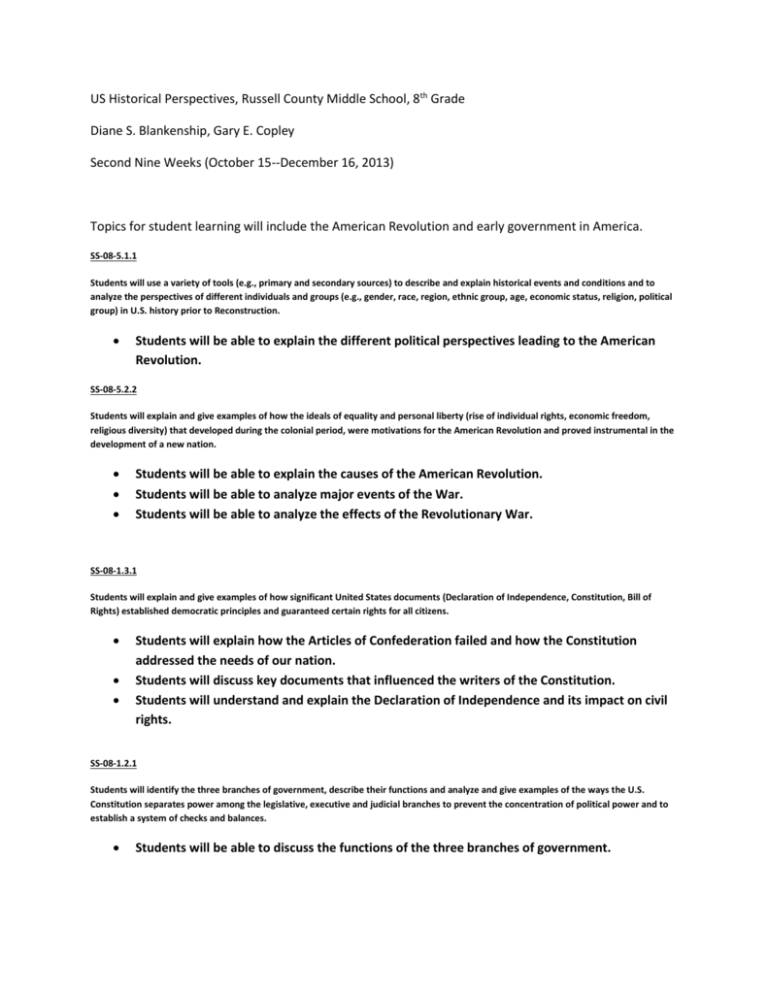
US Historical Perspectives, Russell County Middle School, 8th Grade Diane S. Blankenship, Gary E. Copley Second Nine Weeks (October 15--December 16, 2013) Topics for student learning will include the American Revolution and early government in America. SS-08-5.1.1 Students will use a variety of tools (e.g., primary and secondary sources) to describe and explain historical events and conditions and to analyze the perspectives of different individuals and groups (e.g., gender, race, region, ethnic group, age, economic status, religion, political group) in U.S. history prior to Reconstruction. Students will be able to explain the different political perspectives leading to the American Revolution. SS-08-5.2.2 Students will explain and give examples of how the ideals of equality and personal liberty (rise of individual rights, economic freedom, religious diversity) that developed during the colonial period, were motivations for the American Revolution and proved instrumental in the development of a new nation. Students will be able to explain the causes of the American Revolution. Students will be able to analyze major events of the War. Students will be able to analyze the effects of the Revolutionary War. SS-08-1.3.1 Students will explain and give examples of how significant United States documents (Declaration of Independence, Constitution, Bill of Rights) established democratic principles and guaranteed certain rights for all citizens. Students will explain how the Articles of Confederation failed and how the Constitution addressed the needs of our nation. Students will discuss key documents that influenced the writers of the Constitution. Students will understand and explain the Declaration of Independence and its impact on civil rights. SS-08-1.2.1 Students will identify the three branches of government, describe their functions and analyze and give examples of the ways the U.S. Constitution separates power among the legislative, executive and judicial branches to prevent the concentration of political power and to establish a system of checks and balances. Students will be able to discuss the functions of the three branches of government. SS-08-1.1.2 Students will describe and give examples to support how democratic government in the United States prior to Reconstruction functioned to preserve and protect the rights (e.g., voting), liberty and property of their citizens by making, enacting and enforcing appropriate rules and laws(e.g., constitutions, laws, statutes). Students will demonstrate a working knowledge of the rights and responsibilities of citizenship. SS-08-1.2.2 Students will explain the reasons why the powers of the state and national/federal governments are sometimes shared and sometimes separate (federalism) and give examples of shared and separate powers. Students will give examples of how and why the Constitution is based on federalism. SS-08-1.3.1 Students will explain and give examples of how significant United States documents (Declaration of Independence, Constitution, Bill of Rights) established democratic principles and guaranteed certain rights for all citizens. Students will discuss the debate about ratification of the Constitution and why the Bill of Rights matters. SS-08-1.1.3 Students will describe and give examples of the ways the Constitution of the United States is a document that can be changed from time to time through both formal and informal processes (e.g., amendments, court cases, executive actions) to meet the needs of its citizens. Students will examine key amendments that expanded democracy in the US.

